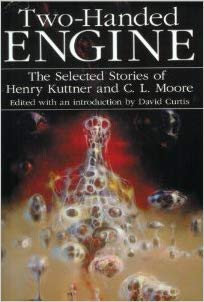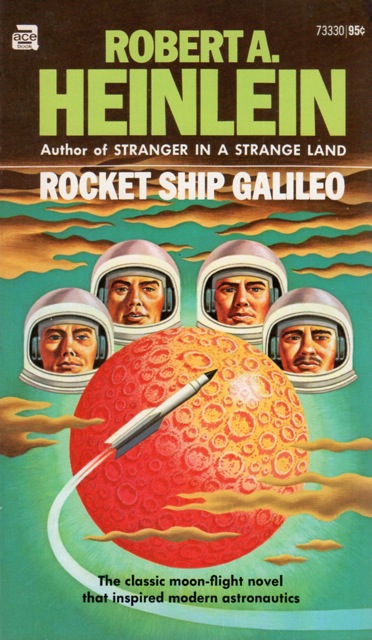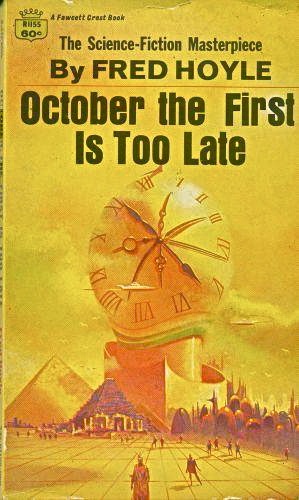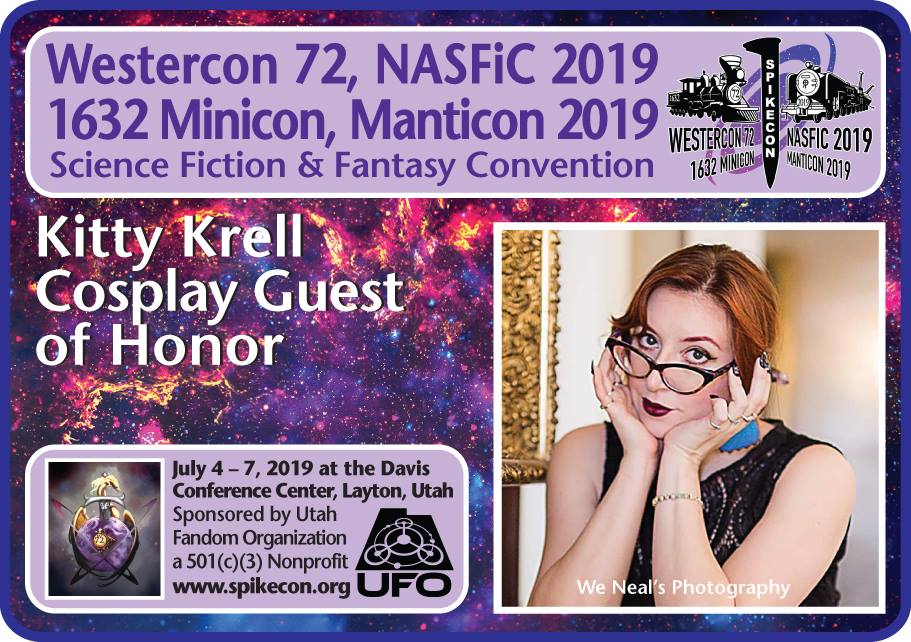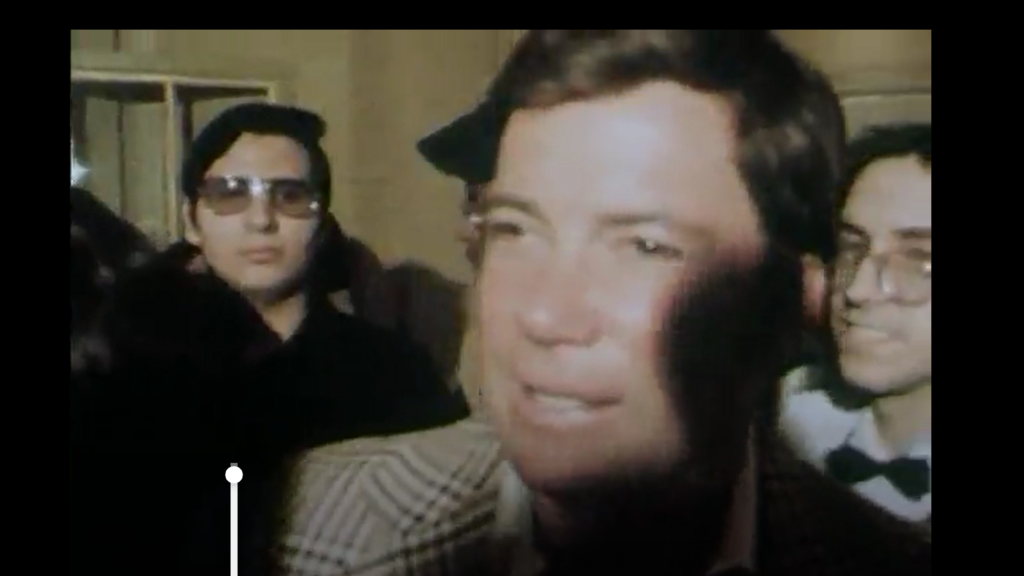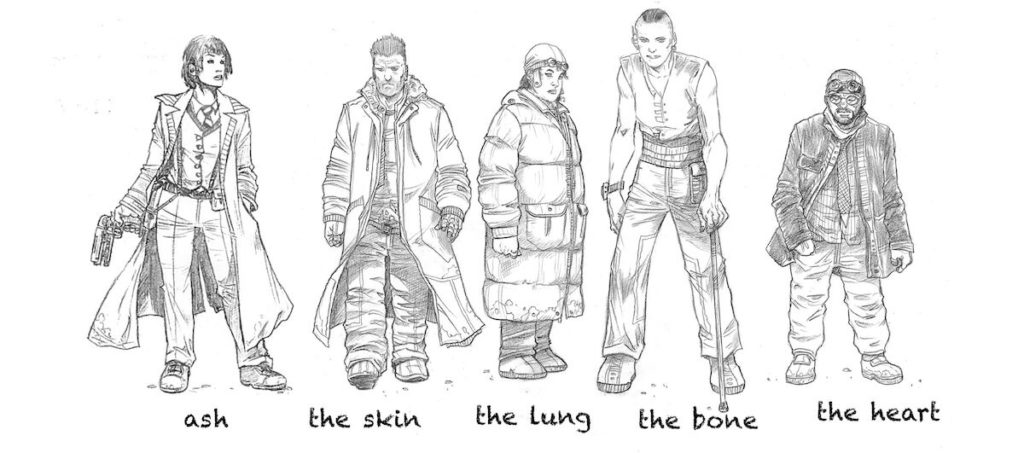(1) DUBBED. The Daily Mail’s headline is apt: “The knight who says Ni! Actor Michael Palin receives his knighthood from Prince William in 50th anniversary year of Monty Python”.
Sir Michael Palin managed to suppress a joke when collecting the ‘unbelievable’ honour of a knighthood from the Duke of Cambridge for his post-Monty Python career.
The writer and broadcaster was dubbed a knight by William for services to travel, culture and geography, making him the first star of the sketch show to receive the honour.
(2) CHANGING FORMULAS IN STORYTELLING. In “Love isn’t what it was” on Aeon, graduate student Sophus Helle says that animated films Disney has released in this decade, including Brave, Frozen, Finding Dory, and Inside Out, show that in these films “the ideal of heterosexual romance has been replaced by a new ideal: family love. The happy ending of our most watched childhood stories is no longer a kiss.”
…It’s not just the word ‘love’ that has changed meaning over the past 10 years of Disney. The word ‘family’ has done the same. Neither Mother Gothel nor the fairy godmother of Maleficent are the biological parents of the films’ main characters, but they still end up taking emotional centre-stage because the actual biological parents are either cruel and psychotic, as in Maleficent, or distant and idealised, as in Tangled. Parenthood is determined by one’s emotional bonds. As a result, the very question of what counts as a ‘family’ in Disney has become more ambiguous and more modern.
(3) BOMBS AWAY. NPR’s Scott Tobias advises, “Erase The Awful ‘Men In Black: International’ From Your Mind”.
If Hollywood studios are content to cannibalize the vaults in search of new hits, the first thing they should remember is why the original films were hits in the first place. For all the bells and whistles that went along with the original 1997 Men in Black, with its cutting-edge alien effects, the reason it works is extremely old-fashioned, rooted in an effective cross-pollination between fish-out-of-water comedy and mismatched buddy comedy.
…There’s a lot of plotting in Men In Black: International, which makes room for a diabolical three-armed seductress (Rebecca Ferguson) and a compact weapon of planet-destroying power, but the more the story unfurls, the deeper the film sinks into quicksand. Director F. Gary Gray and his screenwriters, Art Marcum and Matt Holloway, have made the crucial mistake of believing the franchise needs complex world-building instead of streamlined comedy. Even if the events in the film made any kind of sense, they were never going to matter as much as the good time Hemsworth, Neeson and the two Thompsons are supposed to be showing us. And yet that’s where the emphasis lies.
The Boston Globe gives it 2.5/4 stars.
(4) FIRE TWO. NPR’s Andrew Lapin says “‘The Dead Don’t Die’ In Jarmusch’s Latest, But Your Patience Will”.
“This is going to end badly,” Adam Driver says, over and over with slight variations, in the new zombie comedy The Dead Don’t Die. It’s both the movie’s catchphrase and raison d’être. Things tend not to end well in general, because people have a habit of taking bad situations and making them worse, and there’s no reason to suspect that will change when the dead are rising from their graves and feasting on the bodies of the living. To the extent that the film has a joke, this is it: Humans mess everything up, and in the end probably aren’t worth saving.
All fair points. But does that sound fun to watch? Maybe it could have been, in another universe, with this exact cast and this exact director. Jim Jarmusch is a national treasure, after all, and he’s already proven himself a master of idiosyncratic, cracker-dry comedies that play with our love of dead or dying cultural icons, from Elvis to diners to samurai. But as The Dead Don’t Die smirks through its ironic corpse pile-up, dispatching a parade of beloved actors like rancid meat and playing the same original Sturgill Simpson tune on loop, it’s hard not to wonder if the joke is on us for watching it.
And the Boston Globe gives this one only 1.5 stars.
(5) THEY LOVE TOY STORY 4. But wait! BBC says this one’s getting good reviews — “Toy Story 4: What did the critics think?” Out today in the UK, the fourth (and supposedly final) instalment of Toy Story has been warmly welcomed.
Woody, Buzz and Jessie are returning nine years after they said goodbye to Andy and settled into their new home with Bonnie at the end of Toy Story 3.
The Hollywood Reporter’s Todd McCarthy said: “It’s now certain what one of the summer’s blockbusters will be.
“More than that, how many other film series can legitimately claim to have hit four home runs in a row?” he added.
Variety’s Peter Debruge said the movie gives “satisfying emotional closure”, adding that “the fourth movie wraps up the saga beautifully”.
He added the film “explores the idea of purgatory: What’s it like for a plaything to be ignored, overlooked or entirely unused?”
(6) WOODY ON TOUR. Tom Hanks went on Jimmy Kimmel Live! to promote the movie, and showed he didn’t think much of the heavy-handed guidance he was given by the marketing division: “Tom Hanks Shares Disney’s Strict Rules for ‘Toy Story 4’ Media Tour”.
Hanks also decided to poke more fun at the late-night host by reading a surprising note Disney gave him for any time he would make an appearance on Jimmy Kimmel Live! “When doing Kimmel, please do not mention the Academy Awards. What’s that about?” Hanks asked. After Kimmel questioned why they would add that note, the actor replied: “You got bounced, my friend!”
With fans anticipating the fourth installment of the popular franchise, Hanks celebrated Toy Story 4 for adding new talent in Tony Hale, Keanu Reeves and Carl Weathers. Though he’s starred as Woody since the original film, Hanks revealed that Toy Story 4 may be the best film in the franchise.
“I know it sounds ridiculous because I’m in it, but it’s one of the best movies I’ve ever seen in my life.”
Hanks also revealed that he didn’t know Weathers was in the film. “We never see each other. We maybe will run into each other when somebody’s session finishes and the other is waiting to go on, but at the premiere I saw Carl Weathers and I had to go shake the man’s hand because not only was he Apollo Creed, he was Action Jackson,” said Hanks.
(7) FAMILIAR VOICE. The new Maltin on Movies podcast brings us “Alan Tudyk”.
Alan Tudyk is a gifted actor and a familiar face who achieved cult status as a costar of Joss Whedon’s Firefly and its follow-up feature-film Serenity…but he’s also become the man of a thousand voices. If you’ve seen Wreck-it Ralph, Frozen, Big Hero 6, or even Rogue One: A Star Wars Story you’ve heard his facility with accents, dialects, and the ability to embody colorful characters. He also stars in one of Leonard and Jessie’s favorite unsung movies, Tucker and Dale Vs. Evil. Alan is only too happy to demonstrate his vocal talents during our hilarious interview. Angelenos can currently see him onstage in Mysterious Circumstances at the Geffen Playhouse in Westwood.
(8) TODAY’S BIRTHDAYS.
[Compiled by Cat Eldridge.]
- Born June 14, 1908 — Stephen Tall aka Compton Crook. Stephen Tall was the most common pseudonym of American science fiction writer Compton Newby Crook. He wrote two novels, The Ramsgate Paradox (in his Stardust series) and The People Beyond the Wall. The Stardust Voyages collects the short stories in that series. The Compton Crook/Stephen Tall Memorial Award was established by the Baltimore Science Fiction Society in his name for best first novel in a given year. He is not available in digital form in either iBooks or Kindle. (Died 1981.)
- Born June 14, 1909 — Burl Ives. No, I’m not including because of being him voicing Sam the Snowman, narrator of Rudolph the Red-Nosed Reindeer in that film though I could argue it is genre. No, I’m including him because he was on The Night Gallery (“The Other Way Out” episode) and appeared in several comic SF films, Jules Verne’s Rocket to the Moon and Earthbound. He also appeared in The Bermuda Depths which is more of a horror film. (Died 1995.)
- Born June 14, 1914 — Ruthven Todd. Scottish author of mostly children’s books whose series The Space Cats begins with Space Cat and features a cat who stows away on a spaceship. He wrote several more conventional genre novels as well, Over the Mountain and The Lost Traveller. A Space Cats omnibusand The Lost Traveller are available at iBooks and Kindle. (Died 1978.)
- Born June 14, 1921 — William L. Hamling. He was a lifelong member of First Fandom. Editor of the Stardust fanzine in 1940, and Imagination and Imaginative Tales in the Fifties. He did the 1940 Chicon program book with Mark Reinsberg. And his Regency publishing concern in the Fifties would do paperback editions of Kurt Vonnegut, Robert Bloch and Philip José Farmer. (Died 2017.)
- Born June 14, 1949 — Harry Turtledove, 70. I wouldn’t know where to begin with him considering how many series he’s done. I’m fairly sure I first read novels in his Agent of Byzantium series and I know his Crosstime Traffic series was fun reading.
- Born June 14, 1972 — Adrian Tchaikovsky, 47. He is best known for his Shadows of the Apt series, and for Children of Time which won an Arthur C. Clarke Award. The After War series is multi author. He wrote the first, Redemption’s Blade, and Justina Robson wrote the second, Salvation’s Fire.
(9) THINKGEEK SALE. The ThinkGeek website is moving its business the main GameStop website, and they’re doing a 50% off sales-final sale on the whole site if you use the code MOVINGDAY. While supplies last, of course. As for the future —
Nope. On July 2nd, 2019, ThinkGeek.com will be moving in with our parent company GameStop. After this move, you will be able to shop a curated selection of unique items historically found on ThinkGeek.com via a ThinkGeek section at GameStop
Daniel Dern returns from a personal scouting expedition to say, “Alas, the Con Survival Bag of Holding is out of stock, and I don’t even see the class Bag of Holding (which had been revised/updated in the past year, although I haven’t yet seen it up close and personal).”
(10) TROJAN APP. According to NPR, “Spain’s Top Soccer League Fined For Using App To Spy On Fans In Fight To Curb Piracy”.
On Tuesday, Spain’s premier soccer league, La Liga, was hit with a 250,000-euro fine — about $280,000 — for using its mobile phone app to spy on millions of fans as part of a ploy to catch venues showing unlicensed broadcasts of professional matches.
The country’s data protection agency said the league’s app, which was marketed as a tool to track game scores, schedules, player rankings and other news, was also systematically accessing phones’ microphones and geolocation data to listen in on people’s surroundings during matches. When it detected that users were in bars, the app would record audio — much like Shazam — to determine if a game was being illegally shown at the venue.
(11) VENICE OF THE NORTH. Like they say, if it’s not Scottish, it’s… “Scotland’s crannogs are older than Stonehenge”
Archaeologists have discovered that some Scottish crannogs are thousands of years older than previously thought.
Crannogs were fortified settlements constructed on artificial islands in lochs.
It was thought they were first built in the Iron Age, a period that began around 800 BC.
But four Western Isles sites have been radiocarbon dated to about 3640-3360 BC in the Neolithic period – before the erection of Stonehenge’s stone circle.
(12) BUILT TO LAST. BBC asks “How to build something that lasts 10000 years”.
Alexander Rose and a team of engineers at The Long Now Foundation are building a clock in the Texan desert that will last for 10,000 years. He explains what he’s learnt about designing for extreme longevity.
…Over the last two decades, I have been working at The Long Now Foundation to build a monument-scale “10,000 Year Clock” as an icon to long-term thinking, with computer scientist Danny Hillis and a team of engineers. The idea is to create a provocation large enough in both scale and time that, when confronted by it, we have to engage our long-term future. One could imagine that if given only five years to solve an issue like climate change, it is very difficult to even know where to begin because the time scale is unreasonable. But if you reset the scale to 500 years, even the impossible can start to seem tractable.
Building a 10,000-year machine required diving into both history and the present to see how artefacts have lasted. While we can slow the workings of the clock itself down so that it only ticks as many times in 10,000 years as a watch does in a person’s lifetime, what about the materials and location? Over the last 20 years I have studied how other structures and systems have lasted over time, and visited as many of them as I can. Some sites have been conserved by simply being lost or buried, some have survived in plain sight by their sheer mass, others have had much more subtle strategies.
(13) URSA MINOR. In Mission: Unbearable, Kuma Bear is tasked with a Mission to SpikeCon.
(14) DOCTOR SLEEP. The official trailer has been released for Doctor Sleep, based on Stephen King’s sequel to The Shining.
[Thanks to Andrew Porter, John King Tarpinian, Mike Kennedy, Michael Toman, Cat Eldridge, JJ, Martin Morse Wooster, Carl Slaughter, Kevin Standlee, and Chip Hitchcock for some of these stories. Title credit belongs to File 770 contributing editor of the day Bruce Arthurs.]

